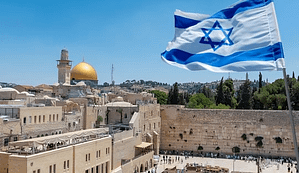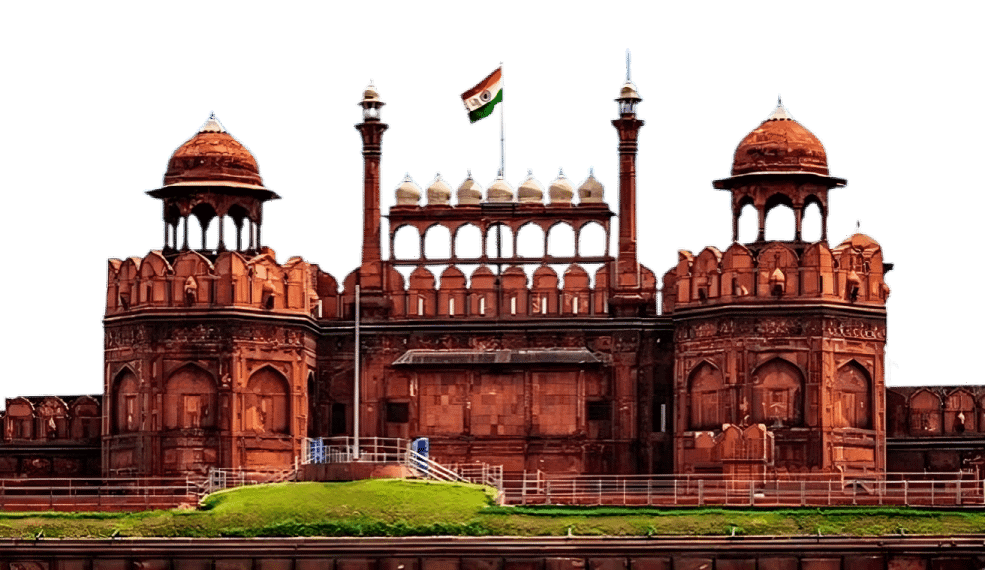Israel Country In The Middle East Capital of Jerusalem

The State of Israel is one of the most historically, religiously, and politically significant nations in the modern world. Situated in the Middle East along the eastern shore of the Mediterranean Sea, Israel is a country with ancient roots, modern challenges, and a powerful global presence. The journey of how Israel became a country is a complex tale of exile, return, struggle, diplomacy, and resilience.
This comprehensive narrative explores how Israel became a nation, traces its ancient and modern history, explains the events that led to its independence in 1948, and provides insight into its current population, demographics, and geographic statistics including land area in kilometers.
- Ancient History and Origins
The story of Israel begins more than 3,000 years ago. Ancient Israel was the homeland of the Hebrew people, whose stories are documented in the Torah and Old Testament. Around 1000 BCE, under King David and later King Solomon, the United Kingdom of Israel and Judah flourished, with Jerusalem as its capital and spiritual center.
This ancient kingdom was eventually divided and conquered:
- Assyrians destroyed the northern Kingdom of Israel in 722 BCE.
- Babylonians destroyed the southern Kingdom of Judah and the First Temple in 586 BCE, exiling Jews to Babylon.
The Jews returned under Persian rule and built the Second Temple, but successive empires—Greek, Roman, and Byzantine—dominated the land, culminating in the Roman destruction of the Second Temple in 70 CE. This began the Jewish diaspora, a near-2,000-year-long period in which Jews lived across Europe, North Africa, and the Middle East.
- The Diaspora and Rise of Zionism
After the diaspora, Jews maintained strong spiritual and cultural ties to their ancestral land. Despite widespread persecution, especially in Europe, the hope of returning to Zion (a biblical term for Jerusalem and Israel) never faded.
In the late 19th century, fueled by European anti-Semitism, pogroms, and rising nationalism, Theodor Herzl, an Austro-Hungarian journalist, launched Zionism—a political movement advocating the return of Jews to their homeland in Palestine.
Israel Key milestones:
- First Zionist Congress (1897) in Basel, Switzerland.
- Jewish National Fund (1901) founded to purchase land in Palestine.
- Waves of Jewish immigration, called Aliyah, began around 1882.
- The British Mandate and Balfour Declaration
During World War I, the Ottoman Empire, which had controlled Palestine for centuries, was defeated by British forces. In 1917, Britain issued the Balfour Declaration, expressing support for “the establishment in Palestine of a national home for the Jewish people.”
Post-war, the League of Nations gave Britain the Mandate for Palestine (1920–1948). During this period:
- Jewish immigration increased, especially from Europe and Russia.
- Tensions grew between Jewish immigrants and Arab Palestinians.
- The British attempted to balance competing promises to Jews and Arabs, resulting in growing unrest.
The Holocaust during World War II, which led to the murder of 6 million Jews by Nazi Germany, intensified global support for a Jewish state.
- Path to Independence (1947–1948)
Following World War II, Britain struggled to manage the conflict in Palestine. The newly formed United Nations proposed a solution.
UN Partition Plan (1947)
- Proposed two states: one Jewish, one Arab.
- Jerusalem to be an international city under UN control.
- Jews accepted the plan; Arabs rejected it.
Declaration of the State of Israel
On May 14, 1948, David Ben-Gurion, leader of the Jewish Agency, proclaimed the independent State of Israel. The declaration emphasized:
- The historical connection between Jews and their land.
- A democratic state open to all religions and ethnicities.
- Peace with neighboring states.
The next day, armies from Egypt, Jordan, Syria, Iraq, and Lebanon invaded, sparking the First Arab-Israeli War (1948–49). Israel survived the attack, expanded its territory, and solidified its statehood. Over 700,000 Palestinian Arabs fled or were displaced—this remains one of the central issues of the Israeli-Palestinian conflict.
- Immigration and Population Growth
Following independence, Israel absorbed millions of Jewish immigrants:
- Holocaust survivors from Europe.
- Jews from Arab countries, many of whom were expelled or fled due to rising hostility.
- Ethiopian Jews airlifted in major operations like Operation Moses and Operation Solomon.
- Russian and Eastern European Jews after the collapse of the Soviet Union.
This transformed Israel into a multi-ethnic, multi-lingual society, with Jews from over 100 countries. Arabic-speaking minorities, Druze, Christians, Bedouins, and other ethnic groups also remained or settled in Israel.
- Wars, Peace, and Politics
Israel’s early years were marked by conflict and survival.
Key Wars:
- 1948 War of Independence
- 1956 Suez Crisis
- 1967 Six-Day War: Israel captured East Jerusalem, Gaza, West Bank, Sinai Peninsula, and Golan Heights.
- 1973 Yom Kippur War
- Lebanon War (1982)
Despite wars, Israel also sought peace:
- 1979 Peace with Egypt (returned Sinai)
- 1994 Peace with Jordan
- Oslo Accords (1993–1995): Israel and Palestinian Liberation Organization (PLO) recognized each other, though peace remains elusive.
In 2020, Israel signed the Abraham Accords with UAE, Bahrain, Sudan, and Morocco, normalizing diplomatic relations and boosting trade and security.
- Israel Today: Government and Society
Israel is a parliamentary democracy, with a President as head of state and a Prime Minister as head of government. The Knesset (parliament) has 120 members elected through proportional representation.
Social Diversity:
- Jews: 73% (Ashkenazi, Sephardi, Mizrahi, Ethiopian, Russian, etc.)
- Arab Muslims and Christians: 21%
- Others: 6% (including Druze, Circassians, foreign workers)
Religions, ideologies, and languages overlap. While Hebrew is the official language, Arabic is widely spoken, and English is commonly used in education and business.
- Population and Area
Population (As of 2024):
- Total: ~9.8 million people
- Jewish: ~7.15 million
- Arab (Muslim, Christian, Druze): ~2.1 million
- Others: ~0.55 million
Demographic Trends:
- High birth rate: Especially among Orthodox Jews and Arabs
- Urbanization: Over 90% of Israelis live in cities
- Major Cities:
- Jerusalem: Capital, ~950,000 people
- Tel Aviv: Economic and cultural hub, ~460,000
- Haifa, Beersheba, Ashdod, and Netanya are other large urban centers
- Geographic Size in Kilometers
Total Area of Israel:
- Land Area: Approximately 22,145 square kilometers
- This includes disputed territories like the Golan Heights and East Jerusalem.
Geographic Features:
- North: Fertile hills of Galilee
- Center: Coastal plain (densely populated), home to Tel Aviv and Haifa
- South: Negev Desert, covering 60% of the country
- East: Jordan Valley, Dead Sea (lowest point on Earth, -430 meters)
- Water Bodies: Sea of Galilee (freshwater lake), Mediterranean Sea (west coast)
Despite its small size, Israel features diverse landscapes—green hills, arid deserts, mountains, and seashores—all within a few hours’ drive.
- Challenges and Achievements
Major Challenges:
- Israeli-Palestinian conflict: Rooted in land disputes, refugee issues, and security concerns
- Social divisions: Between secular and religious Jews, Ashkenazi and Mizrahi, Jews and Arabs
- Cost of living: Particularly high in housing and urban centers
Major Achievements:
- Innovation and Technology: Known as the “Startup Nation,” with top global rankings in tech, cybersecurity, and medicine
- Military Strength: One of the most powerful in the world, with advanced air, ground, and cyber capabilities
- Education and Research: World-class universities like the Hebrew University and Technion
- Cultural Impact: Literature, film, and music that blend East and West
- Summary of Key Facts
| Aspect | Detail |
| Official Name | State of Israel |
| Independence Day | May 14, 1948 |
| Capital | Jerusalem (internationally disputed) |
| Population (2024) | ~9.8 million |
| Land Area | ~22,145 sq. km |
| Language | Hebrew, Arabic |
| Religion | Jewish (73%), Muslim, Christian, Druze |
| Currency | Israeli New Shekel (ILS) |
| GDP (2024) | ~$564 billion USD |
| Geography | Coastal plain, Negev desert, mountains, Dead Sea |
Conclusion
The creation of the State of Israel was not a simple act of drawing borders. It was the result of thousands of years of longing, decades of political movement, wars of survival, and intense diplomatic efforts. Today, Israel is a democratic and highly developed country with a vibrant culture, advanced technology, and a diverse population. Its small size belies its global impact.
Understanding Israel’s formation and history is essential for comprehending broader Middle Eastern dynamics and the challenges of peace and coexistence in the region. Despite its complexities, Israel continues to grow, innovate, and contribute to the world, all while navigating the challenges of its unique identity and location.




3 thoughts on “Israel History, Formation, Population, and Geography”